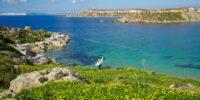Malta’s history is full of interesting rule systems from different regimes. One is the principle of seeking sanctuary. We’ve all seen movies where the bad guys go on the run across cities and even countries. But in Malta, they used to run straight into a church. So how and why were criminals able to hide out in Churches?
The Age-Old Dilemma: Sanctuary in Malta’s 17th and 18th Centuries
In the 17th and 18th centuries, there was a rule stating that criminals could seek refuge in a Catholic place of worship. This meant they could not be arrested or apprehended by the authorities. It didn’t matter what crime they’d just committed, or even if they were convicted of a crime by a court.
Sanctuary was a problem in a tiny place like Malta. There are well over 300 churches and chapels in a country that’s just 316sq km. That’s a lot of opportunities for criminals to escape justice – at least for a while. The authorities would have to post a guard to watch out for them trying to escape or go into hiding.
The authorities were increasingly annoyed by all this. Because of this, Grand Master Pinto complained to the Holy See about this system of sanctuary. Pinto was the head of the Order of St John who ran the Maltese islands at this time.
Historical Changes in Malta’s Ecclesiastical Immunity
As a result, ecclesiastical immunity was withdrawn from many rural chapels in 1761. It was confined only to churches where the holy sacrament was kept.
Signs on marble slabs went up to inform people in certain places of worship. They stated: Non gode l’immunità ecclesiastica. This meant that the church or chapel “does not enjoy ecclesiastical immunity”. You can still see these slabs on some places of worship to this day.

Although the rules had got tighter, full sanctuary in any Catholic church was only completely removed from Malta in 1828 by the British authorities, who were then running the country.
Of all the stories about criminals seeking this kind of sanctuary in Malta, one particularly interesting case dates from 1691. Filippo Fenech, aged about 28, had robbed and killed a man before running into the church of St Mary in Ħal-Muxi, near the town of Żebbuġ.
The authorities sent a platoon of court officers from Mdina to watch Fenech and arrest him the moment he came out of the church. But he wasn’t going to come out any time soon – the locals were bringing him bread, cheese and milk.
Ten days after he’d gone in, on a hot day in July, Fenech came out the church, walked across the parvis, went down two steps and threw away a bucket of his waste against the side of the church. He didn’t know he was being watched.
As he was walking back towards the church door, six shots were fired at him from a house opposite. Two hit and badly wounded him. He managed to crawl inside the church and tell the locals who’d come running to see what had happened. He was given confession and communion before he died.
The Controversial Case of Filippo Fenech: Breaching Sanctuary in 17th-Century Malta
This case caused a fuss, and the Bishop of Malta visited the scene with his officials to work out whether ecclesiastical immunity had been breached. The head of the court officers who’d fired the shots ignored a request by the Bishop to come and explain what had happened.
A report was gathered by Catholic church officials in Malta and sent to the Vatican in Rome. It was concluded that Fenech was still within the area of ecclesiastical protection when he was walking around the front of the church, and should not have been shot.
It doesn’t appear, however, that any of the officers who fired the shots, nor their leader, faced any punishment for breaking the rules and shooting Fenech. He had, let’s not forget, murdered someone, so it’s likely the authorities had little sympathy for him.
To hear more quirky stories about Malta’s history, follow Dark Malta Tours on Facebook, Instagram and TikTok and book a walking tour to learn tantalising tales from the island’s peculiar past.














